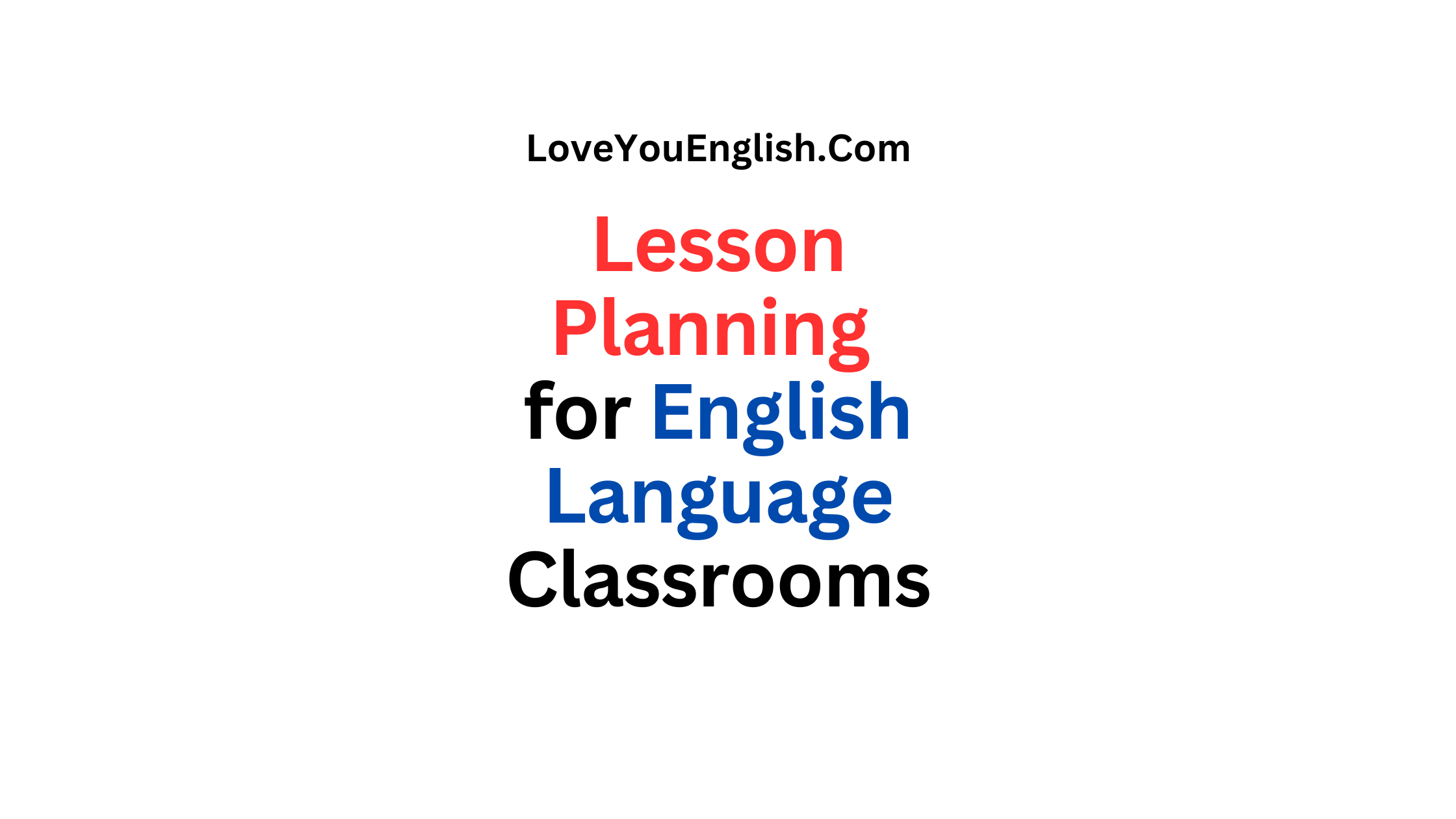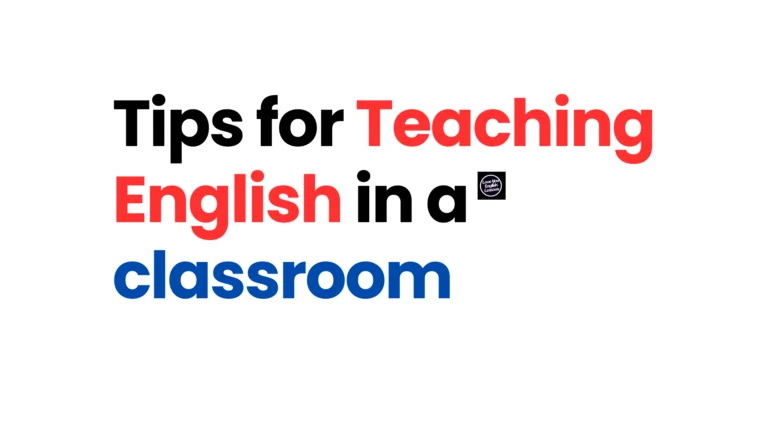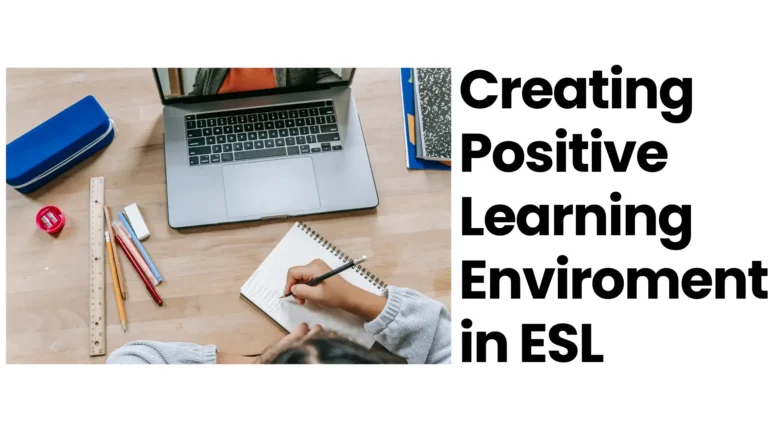Effective Lesson Planning for English Language Classrooms
Effective Lesson Planning for English Language Classrooms
In the exciting field of teaching English, making a good lesson plan is super important for having a successful class.
A great lesson plan helps teachers know what to do and makes sure students have a fun and useful learning time.
This awesome guide will show you how to make awesome lesson plans for English class, with cool tips and tricks for new and old teachers alike.
Understanding the Importance of Lesson Planning
Lesson planning is more than just an administrative task; it’s a crucial component of effective teaching.
A well-designed lesson plan:
- Provides structure and direction for both teachers and students
- Ensures that learning objectives are clear and achievable
- Helps manage time efficiently
- Allows for differentiation and personalization of instruction
- Facilitates smooth transitions between activities
- Increases teacher confidence and reduces stress
- Enables better assessment and evaluation of student progress
By investing time in thoughtful lesson planning, teachers set themselves and their students up for success in the English language classroom.
Key Components of an Effective Lesson Plan
A comprehensive lesson plan typically includes the following elements:
a) Objectives: Clear, measurable goals for what students should learn or be able to do by the end of the lesson.
b) Materials and Resources: A list of all items needed for the lesson, including textbooks, handouts, technology, and props.
c) Warm-up: An engaging activity to activate prior knowledge and get students interested in the lesson topic.
d) Presentation: Introduction of new language or concepts, often using various methods such as visual aids, realia, or multimedia.
e) Practice: Guided activities that allow students to work with the new language or skills.
f) Production: Independent tasks that enable students to demonstrate their understanding and use of the new material.
g) Assessment: Methods for evaluating student progress and understanding.
h) Reflection: A section for the teacher to note what worked well and areas for improvement.
Setting Clear and Achievable Objectives
The foundation of any effective lesson plan is a set of clear, specific, and achievable objectives.
When formulating objectives, consider using the SMART criteria:
- Specific: Clearly define what students will learn or be able to do.
- Measurable: Include criteria for assessing whether the objective has been met.
- Achievable: Ensure the objective is realistic within the given time frame and student abilities.
- Relevant: Align the objective with curriculum standards and students’ needs.
- Time-bound: Set a timeframe for achieving the objective.
Example of a SMART objective for an English language lesson: “By the end of the 60-minute lesson, students will be able to use three new phrasal verbs related to technology in both written and spoken contexts with 80% accuracy.”
Selecting Appropriate Materials and Resources
Choosing the right materials and resources is crucial for engaging students and supporting their learning.
Consider the following when selecting materials:
- Relevance to the lesson objectives and student interests
- Age and proficiency level appropriateness
- Cultural sensitivity and inclusivity
- Variety of formats (textbooks, authentic materials, digital resources)
- Accessibility for all students, including those with learning differences
Remember to prepare backup materials in case of technical issues or unexpected changes in the lesson flow.
More teaching posts:
- Building Vocabulary: Creative Approaches and Activities
- Teaching English As a Second Language: A Comprehensive Guide
- 10 Fun Speaking Games for Language Learners
- Tips for Teaching English in a Classroom
- Explore the world of TEFL online teaching
Designing Engaging Warm-up Activities
An effective warm-up sets the tone for the entire lesson.
It should:
- Activate students’ prior knowledge
- Generate interest in the lesson topic
- Provide a smooth transition into the main lesson content
- Encourage student participation and interaction
Some engaging warm-up ideas for English language classrooms include:
- Short discussions or debates on a relevant topic
- Quick vocabulary games or puzzles
- Picture prompts for description or storytelling
- Brief listening or reading comprehension tasks
- Physical activities or TPR (Total Physical Response) exercises
Crafting Effective Presentation Strategies
The presentation stage introduces new language or concepts to students.
To make this stage more effective:
- Use a variety of presentation methods (visual, auditory, kinesthetic)
- Incorporate authentic materials and real-world contexts
- Employ scaffolding techniques to support learner understanding
- Encourage student participation through elicitation and guided discovery
- Use technology thoughtfully to enhance the presentation (e.g., interactive whiteboards, multimedia)
Developing Meaningful Practice Activities
Practice activities allow students to work with new language in a controlled environment.
Effective practice activities should:
- Provide ample opportunities for repetition and reinforcement
- Gradually increase in difficulty or complexity
- Incorporate pair and group work for collaborative learning
- Include a mix of skills (listening, speaking, reading, writing)
- Offer immediate feedback and error correction
Examples of engaging practice activities include:
- Information gap exercises
- Role-plays and simulations
- Controlled dialogues or conversations
- Guided writing tasks
- Interactive grammar or vocabulary games
Creating Productive Output Opportunities
The production stage allows students to use the new language more freely and creatively.
Effective production activities:
- Encourage meaningful communication
- Reflect real-world language use
- Allow for personalization and self-expression
- Integrate multiple language skills
- Provide opportunities for peer feedback and collaboration
Some ideas for productive output activities:
- Open-ended discussions or debates
- Creative writing tasks (stories, poems, articles)
- Presentations or mini-lectures on chosen topics
- Problem-solving scenarios or case studies
- Project-based learning tasks
Incorporating Effective Assessment Strategies
Assessment is an integral part of the lesson planning process.
It helps teachers gauge student progress and adjust instruction accordingly.
Consider incorporating:
- Formative assessment throughout the lesson (e.g., comprehension checks, exit tickets)
- Peer and self-assessment opportunities
- Performance-based assessments that align with lesson objectives
- Differentiated assessment methods to accommodate various learning styles and abilities
- Clear rubrics or criteria for evaluating student performance
Planning for Differentiation and Inclusivity
Every English language classroom consists of learners with diverse needs, abilities, and learning styles.
Effective lesson planning should account for this diversity by:
- Providing tiered activities with varying levels of difficulty
- Offering multiple modes of instruction and practice (visual, auditory, kinesthetic)
- Incorporating flexible grouping strategies
- Preparing extension activities for fast finishers
- Planning scaffolding and support for struggling learners
- Considering cultural backgrounds and experiences in activity design
Managing Time Effectively
Time management is a critical aspect of lesson planning.
To ensure smooth lesson flow and maximize learning time:
- Allocate realistic timeframes for each activity
- Plan for transitions between activities
- Include buffer time for unexpected situations or extended discussions
- Prepare contingency plans or “filler” activities
- Use timers or visual cues to help students manage their time during activities
Incorporating Technology Thoughtfully
In today’s digital age, technology can greatly enhance English language lessons when used effectively.
When incorporating technology:
- Ensure it serves a clear pedagogical purpose
- Consider the availability and reliability of tech resources
- Plan for potential technical issues
- Provide clear instructions for technology use
- Balance screen time with other types of activities
- Use technology to promote interaction and collaboration, not just individual work
Reflecting on and Improving Lesson Plans
Continuous improvement is key to becoming a more effective teacher.
After each lesson:
- Reflect on what worked well and what could be improved
- Seek feedback from students and colleagues
- Keep a teaching journal to track insights and ideas
- Regularly review and update your lesson plans
- Stay informed about new teaching methodologies and approaches
Long-term Planning and Curriculum Integration
While individual lesson plans are important, they should fit into a broader curriculum framework.
Consider:
- Aligning lessons with course objectives and standards
- Planning thematic units that span multiple lessons
- Ensuring a balance of language skills over time
- Incorporating spiral review of previously taught concepts
- Adapting plans based on ongoing assessment of student needs
Addressing Common Challenges in Lesson Planning
Even experienced teachers face challenges in lesson planning.
Here are some common issues and strategies to address them:
a) Time constraints:
- Develop a personal planning system that works for you
- Create reusable templates and activity banks
- Collaborate with colleagues to share resources and ideas
b) Mixed-ability classes:
- Plan for differentiation in every lesson
- Use flexible grouping strategies
- Provide extension activities and additional support materials
c) Limited resources:
- Get creative with readily available materials
- Utilize online resources and authentic materials
- Develop a personal resource library over time
d) Maintaining student engagement:
- Vary activity types and pacing
- Incorporate students’ interests and real-world connections
- Use gamification and competitive elements judiciously
e) Aligning with curriculum requirements:
- Familiarize yourself thoroughly with curriculum standards
- Create long-term plans that ensure coverage of all required elements
- Regularly review and adjust plans to stay on track
Conclusion:
Lesson planning is like a mix of art and science.
You need to be creative, know how to teach, and understand what your students need.
If you focus on clear goals, fun activities, and good tests, you can make English lessons that are helpful and fun for students.
Remember, planning lessons is something you get better at over time.
As you teach more and get feedback from students and other teachers, you’ll keep getting better.
Enjoy the process of learning and improving, and you’ll see that good lesson plans not only help you teach better but also make you feel good.
If you use the tips in this guide, you’ll be ready to make exciting, fun, and helpful lesson plans for your English class.
Your students will learn a lot from your hard work, and you’ll feel proud of the lessons you give them.
________________________






